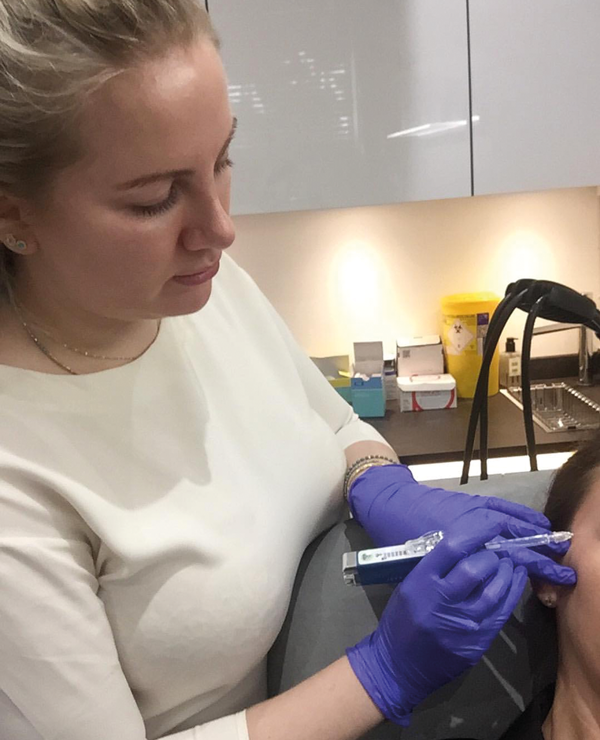
The administration of botulinum toxin is traditionally performed using a small syringe plus needle. There are a few ways this can be performed. Either an integrated insulin syringe is used of 1ml, 0.5ml or 0.3ml which comes attached to a 30g needle.
This technique has the negative of either having to penetrate the bung with the 30g needle which then has to be used on the patient and can be more painful as it has been blunted by the rubber, or the bung has to be removed from the botulinum toxin vial which can be awkward. If the bung is removed from the vial, for smaller vials then often the base of the vial cannot be reached and toxin can be wasted.
My preference is to use a separate syringe and needle system; these syringes are usually 1ml and a 21g green needle is used to withdraw the botulinum toxin from the vial and the needle is then changed to either a 30g, 32g, 33g or 34g needle. I prefer to use a 34g 9mm needle, which reduces discomfort for the patient significantly and decreases bleeding.
“Use of the Juvepen reduces the risk of overdosing the patient with toxin leading to a poor aesthetic result, especially in areas which require lower doses.”
Regardless, both of these techniques require hand administration, which when dealing with small volumes such as 0.5U or less, can be difficult to administer accurately when using the manufacturers recommended dilutions.
The Juvapen is a botulinum toxin injector pen which comes with six pre-set doses corresponding to a set number of onsbotulinum or incotoxin units and can also be converted to deliver Speywood units for those preferring to use abobotulinum toxin. The solution is delivered in a constant flow mode with the pre-set doses being between 0.0125ml to 0.08ml corresponding to the table below. The manufacturers of Juvapen also make the Teosyal®Pen for dermal fillers and the LipoPen for PRP, nano and microfat grafting.
Using the Juvapen
The pen is extremely compact at 7cm and lightweight at 36g. It is used with specially designed syringes, which have cones at the plunger side which snap off at 0.1ml increments in order to insert the syringe into the pen, according to how much toxin you have drawn up into the syringe. These syringes do take a little getting used to but after a few cases, it is very simple to use. It is important to expel any air bubbles from the syringe as this will affect the overall dosing given per plunger press. The main problem with drawing up the toxin into the syringe is many of the settings administer units with a fraction such as 3.8U. My preference is, therefore, to simply leave the settings on the 2U administration setting and press the plunger twice, otherwise there can be excess toxin left in the syringe after use if your calculations are not totally correct.
I find use of the Juvepen reduces the risk of overdosing the patient with toxin leading to a poor aesthetic result, especially in areas which require lower doses, such as administration in the infraorbital region for fine rhytidids. For smaller boluses but more injection points, using the Juvapen does make this a little easier as it facilitates repetitive and reproducible injection procedures.
Anecdotally I have seen that use of the Juvapen does seem to reduce pain intensity experienced by the patient, and there is less swelling associated with use of the Juvapen in comparison to manual injections. I do feel as if using the device increases patient confidence – patients have often never seen a device similar to this, and the idea of having something automated that can tailor the treatment specifically to them really resonates with many patients.
I have been using the Juvapen successfully since its introduction to the UK around six months ago and have been very happy with the results. I have no plans to go back to manual administration of toxin.
See also:
How I Do It - Innovative delivery devices: 3DOSE Unit Dose Injector
How I Do It - Innovative delivery devices: Teosyal®Pen
COMMENTS ARE WELCOME




